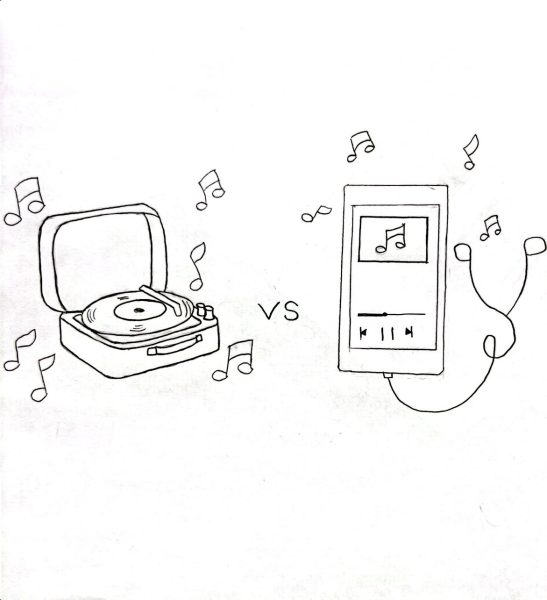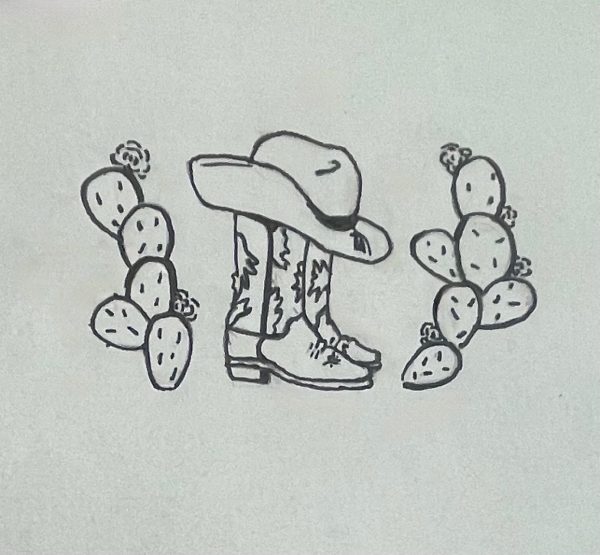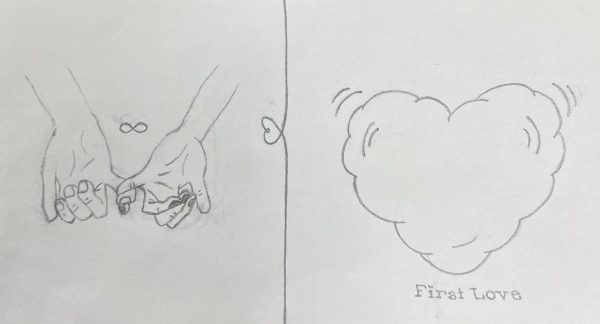Student Insight: The Devil and Queer Representation in the Media
April 26, 2021
Art, simply put, is a form of communication. It has been a means of expression since the evolution of mankind. The earliest forms of art date back to 290–700,000 BC cupules, human made depressions on rock surfaces that resemble the shape of a dome.
Today, art has evolved to encompass a wide spectrum of forms. Art is dancing, doing makeup, painting, sculpting, Tik-Toking, filmmaking, singing. While artistic expression has definitely evolved to fit modern society, there continues to be certain recurring images have always been present in human art. A historic tool of exploration, art has long been traversing religious themes and symbols, more specifically, those of gods and devils.
The art of the devil is a phenomenon that holds unique weight in a Euro-centric, Christian-dominated world. In the sixth century, intricate Byzantine mosaics depicted the devil as blue while twelfth century depictions drew on the ancient Egyptian god Bes, who was often shown as a serpent. Images of the devil continue to mark modern art. Popular television shows that draw on demonic and devilish themes include Lucifer (2016), Chilling Adventures of Sabrina (2018), and Salem (2014).
While this type of expression is nothing new, the world was shocked on March 23, 2021, when American singer and media personality Lil Nas X released his song Call Me By Your Name. Lil Nas electrified the world with his powerful social commentary and hellish themes, eliciting an array of reactions across the spectrum from disgust to pride. In a reclamation of sexuality, Lil Nas’s song represents his journey as a black, gay man and confronts religious teachings that assert homosexuality as a damning sin.
Call Me By Your Name is a product of the times. It is a piece of art that is shocking in the best way, made to challenge us consumers of the media to ask why?
Why include controversial imagery and make such a risky career move? Why depict oneself adjacent to the devil embracing damnation? Why not be a palatable, straight-passing gay man? Wouldn’t life be so much easier?
The answers we seek can be found if people dare to expand their spheres of understanding beyond that of the heterosexual standard of normalcy. People who are queer—an umbrella term used to represent non-heterosexual and/or cisgender people—don’t exist to fit other peoples’ conceptions. Queer culture is beautiful, diverse, radically empathetic, and rule-breaking. It challenges others to imagine a world without human-made prejudices and constructs. I find that invigorating and remarkable, a true exploration of the human spirit. Queer people shouldn’t have to dilute their expression for fear of what is is the REAL sin: hatred, retribution, or even violence.
Perhaps asking queer people to conform to certain expectations is too great a sacrifice. Who does this oppression benefit? If it’s only to ease the conscience of straight people, to eliminate their discomfort at the source, then maybe it’s not worth it.
The fact remains that there are queer people all over the world, begging for representation and validation, sometimes even at the cost at their lives. According to the Trevor Project, LGBTQ+ youth are almost five times more likely to have attempted suicide compared to heterosexual youth.
Call Me By Your Name represents this unconditional acceptance, not in spite of the potential repercussions of Hell, but in order to stand for something greater. Living dynamically and truthfully is shocking, raw, and uncomfortable. But that’s just life.
From the Byzantine empire to 2021, imagery of the devil has never in itself been good or evil. Instead it is a lesson and a symbol, letting one learn from it what one may. In the case of Lil Nas X, he stands for hope: the hope for a future that will not condemn queer people for simply existing.
Art has been and always will be one of the purest forms of human expression. Its mediums have simply evolved and shifted. Modern art continues to teach us lessons about ourselves and the world, and Lil Nas X’s Call Me By Your Name is a prime example of just that.







Sydney Harrell • May 3, 2021 at 12:45 pm
art is a medium for anyone and everyone to express how they feel and who they are, and Lil Nas embracing who he is and expressing that through his song regardless of how easy other paths would be is so powerful. and additionally, i really hope this starts to pave the way for LGBTQ+ youth to begin expressing who they are without fear.
bella • May 3, 2021 at 12:45 pm
You put a lot of time into this article, and it really shows. The research, lived experiences, all of it is so important when examining queer culture. amazinggggg job
James • May 3, 2021 at 11:09 am
It is important to show this, because after the song came out they literally look it off streaming sites for a day
Simran • May 2, 2021 at 11:36 pm
Lil Nas X is so iconic for this and repeat what the REAL SINS are louder for the people in the back